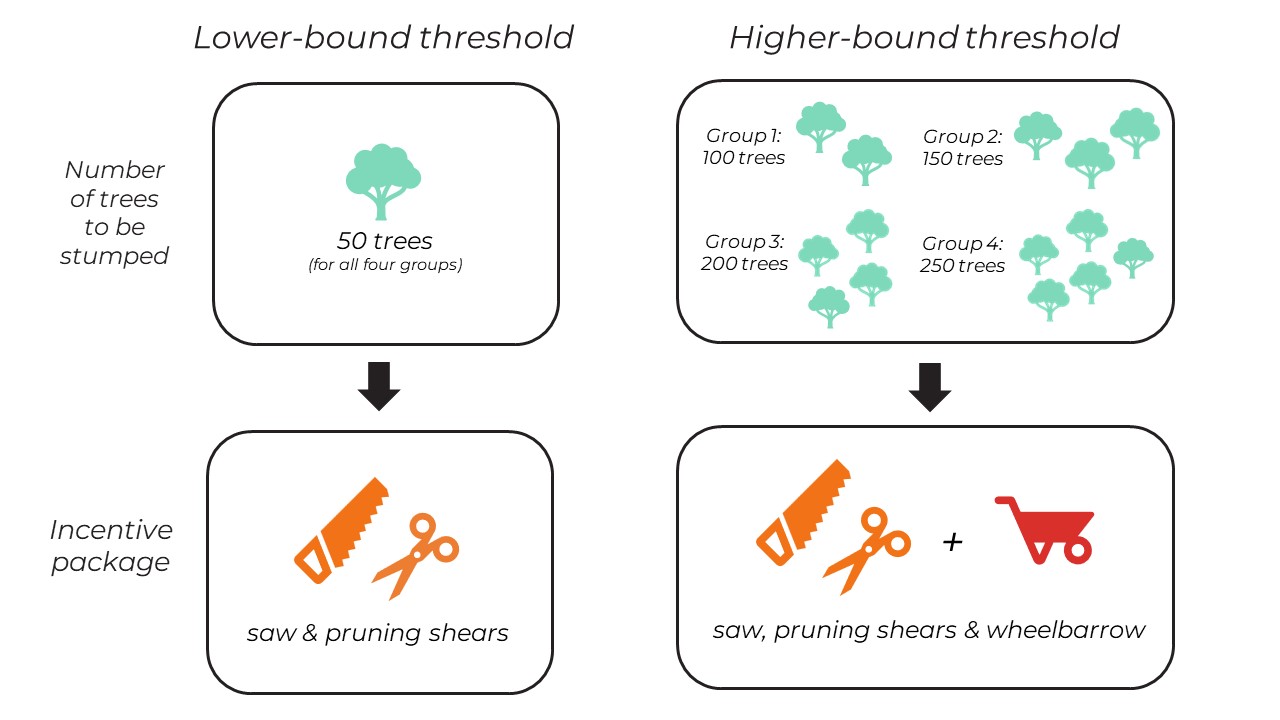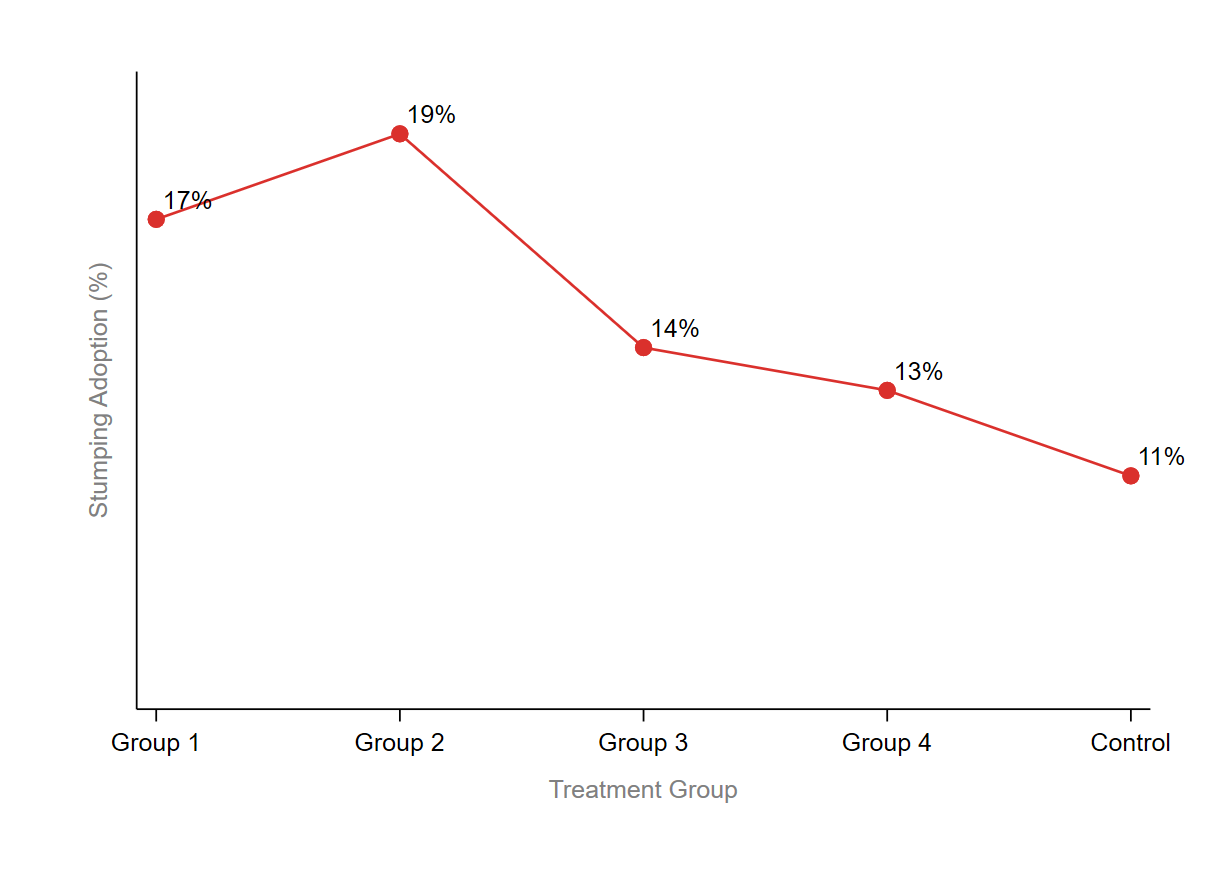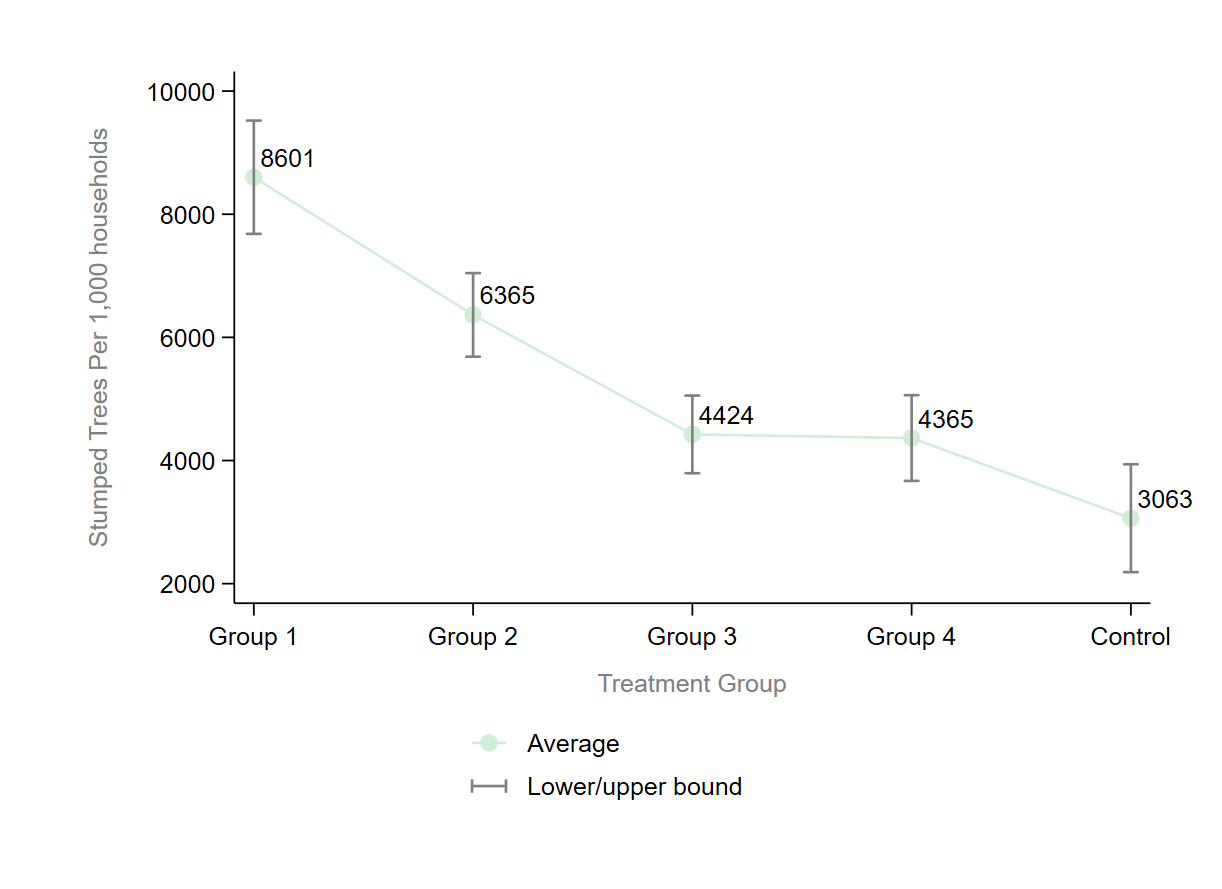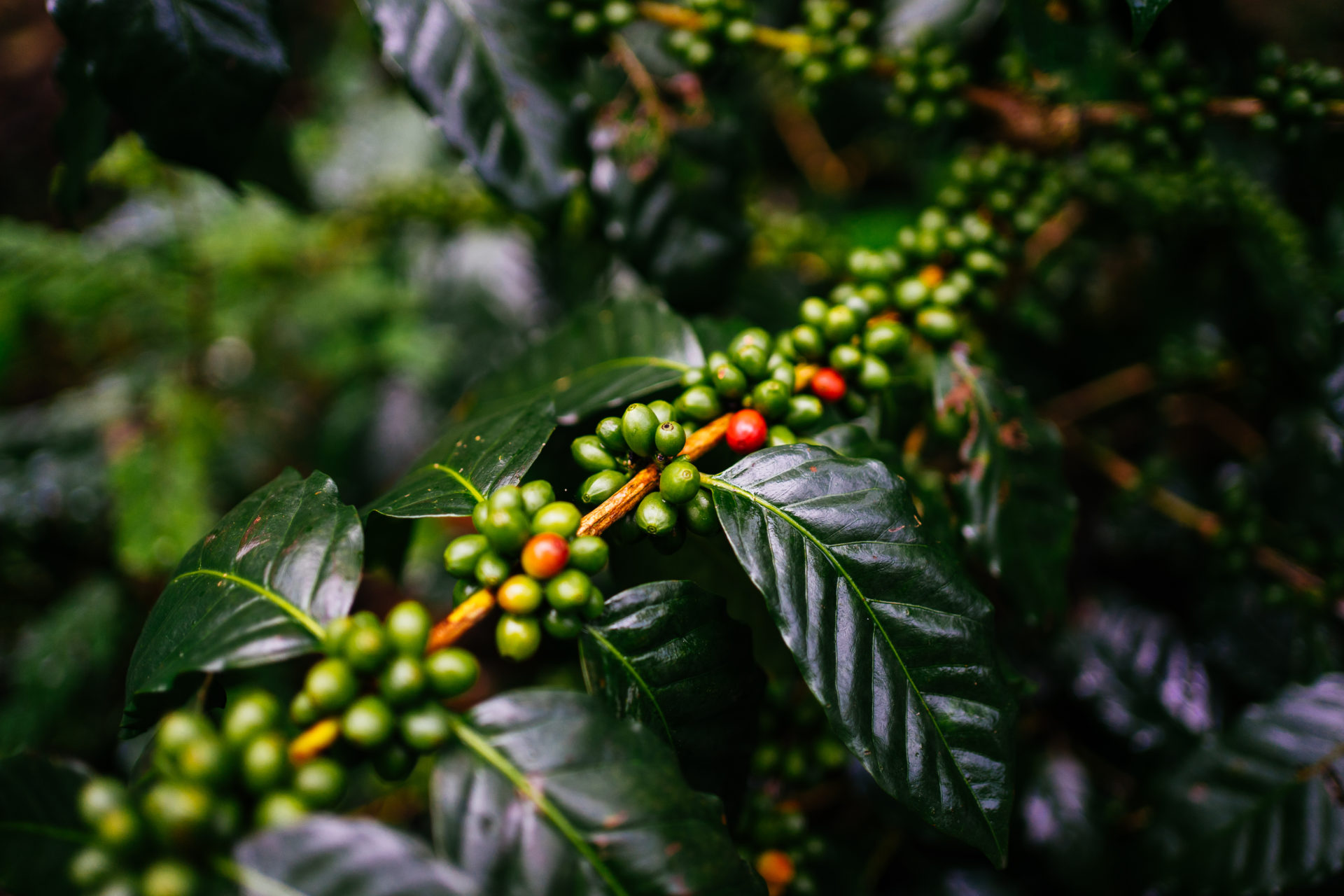Rejuvenation, otherwise known as stumping, is the most important best practice for Ethiopian coffee farmers. Stumping is the practice of rejuvenating older coffee trees by cutting all their main stems, which can increase coffee yields two to three years later. TechnoServe’s Coffee Farm College is a two-year program that trains farmers to stump their old coffee trees, among other agricultural practices. To understand how to provide additional motivation for stumping adoption, Laterite developed the Tools For Stumping pilot alongside TechnoServe and HereWeGrow, a nonprofit organization based in Hamburg, Germany. This pilot program was expanded in 2022, targeting all 23,000 coffee farming households registered in the 2020 cohort of TechnoServe’s Coffee Farm College in Sidama, Ethiopia. The expanded evaluation found that offering an incentive in exchange for stumping coffee trees leads to higher adoption of the practice.
Evaluation Design: Measuring the impact of stumping incentives
In exchange for stumping a number of coffee trees, households were given a tool package consisting of a saw, pruning shears and a wheelbarrow. This experiment, which began after the conclusion of the Coffee Farm College, randomly assigned farmers to one of the four treatment groups or the control group. Each treatment group was assigned a lower (constant across groups) and higher-bound tree threshold at which they had to stump in order to receive the full tool package. Randomization occurred at the higher-bound threshold, where households were required to stump 100, 150, 200 or 250 trees to receive the larger incentive package:

The goal of this evaluation was to determine the additional impact of receiving a stumping incentive on the adoption of stumping. We also aimed to determine the best incentive package in terms of impact and cost-effectiveness.
Insights: incentives increased the adoption of stumping
The program had a clear impact on stumping adoption and the number of trees stumped. Groups 1 and 2 created an estimated 7.5 and 8.9 percentage point increase in stumping adoption relative to the control group, respectively. Thresholds in groups 3 and 4 however proved too difficult for farmers to meet, generating far less stumping activity.

Figure: Adoption of stumping in 2022, by treatment assignment
In group 1, an estimated 5,960 additional trees per 1,000 households were stumped, an increase of almost 200%. This would translate to an estimated increase in stumping of more than 137,000 trees were this incentive to be offered to all households registered in the HereWeGrow 2020 Coffee Farm College cohort.

Figure: Stumped trees per 1,000 households, by treatment assignment
Farm size, age, farm visits and household participation all appear to be important determinants of stumping adoption. Receiving more farm visits from a TechnoServe farmer trainer also appears to positively affect stumping outcomes. We also see a positive relationship between stumping and whether a household has two members (i.e. husband and wife) registered in the Coffee Farm College program. These show the value of engaging the whole household in order to improve the adoption of agricultural practices, as well as the importance of on-farm interactions.
Cost-effectiveness is key to understanding the viability of an intervention. Despite being the most expensive due to the kind of tool packages distributed, group 1 is also the most cost-effective at EUR 2.30 (128 Ethiopian Birr) per additional stumped tree. This is because the general costs of running such a program (staff salaries, office rental and vehicle operations) outweighed the higher costs of tool distribution. Group 4 for example, which created much less impact, cost an estimated EUR 7.87 (450 Ethiopian Birr) per additional stumped tree.
Key Takeaways
● Making incentives easier to obtain creates more impact. We observed the largest effects on stumping outcomes for groups 1 and 2. Treatment group 1 created an additional 5,960 stumped trees per 1,000 households, a 200% increase over the control group. No statistically significant treatment effects were found for groups 3 and 4.
● More attainable incentives can also be the most cost-effective. Despite leading to higher program costs due to more participants receiving an incentive, the additional impact created can lead to more efficiency. Similar interventions should therefore be built around lower, more achievable tree thresholds.
● There are many considerations to stumping adoption which can affect program success. We observe positive relationships between many factors such as farm size, age and program participation, and stumping. They all appear to be important determinants of farmers’ adoption to stumping. To maximize impact, it is important to understand the target group, and how their characteristics affect how they benefit from the program.
This blog post was written by Oliver Budd, Research Associate at Laterite.
